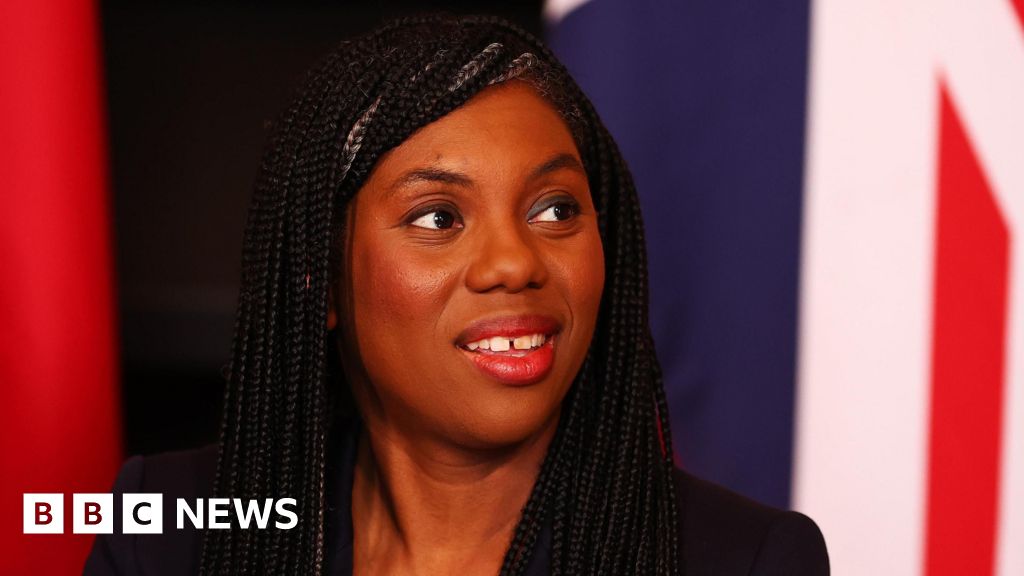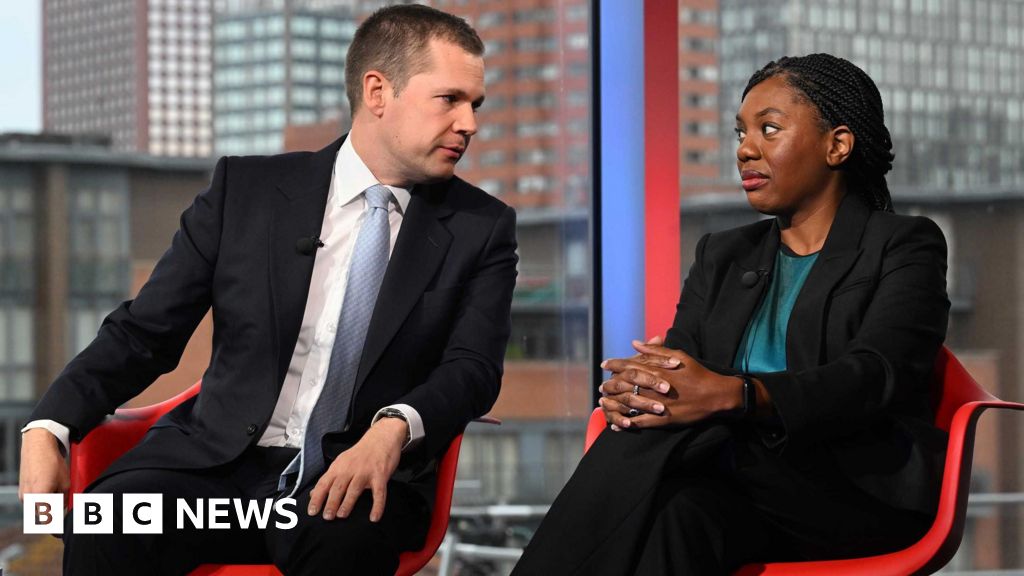Donald Trump won more than 74 million votes in 2020 — more than any Republican presidential candidate in history, but not enough to win the popular vote or the Electoral College.
The loss remains an obsession for the former president and many of his supporters, whose refusal to accept defeat led to a riot at the Capitol and drove political discourse for four years.
Only recently has Trump acknowledged that he lost to President Joe Biden “by a whisker,” though he quickly returned to repeating claims of voter fraud that have been debunked at every turn.
Now, rather than the rematch he had sought with Biden, who dropped his bid for a second term in July after a disastrous debate performance raised concerns about his health, Trump has a battle with Vice President Kamala Harris.
If the race is as close as polls suggest, the country may not know the results on election night. Here are five keys to a Trump win.
Ground game gamble pays off
Some of the most intense Republican hand-wringing stems from jitters about Trump’s get-out-the-vote machine, which the campaign largely outsourced to groups like Charlie Kirk’s Turning Point Action and the Elon Musk-aligned America PAC. It’s not hard to find a GOP consultant eager to have a hushed but panicked conversation about the lack of field offices — once a data point spun as a sign of commanding strength in battleground states.
There’s a precision to identifying and mobilizing the voters a campaign needs to win, with premiums on low-propensity voters who can tip an election. And while Kirk and Musk are unshakeable Trump allies, neither has experience in delivering the type of sophisticated turnout operation that can win the White House. Musk’s PAC has brought on professionals, including veterans of Florida Gov. Ron DeSantis’ unsuccessful bid for the GOP presidential nomination.
Here are five keys to a Harris victory
A slipshod door-knocking effort could cost Trump the election. To that point, a blazing caution sign emerged this week for Trump. Nine people connected to the Musk PAC described to NBC News an operation so beset by problems — including faulty data — that it could damage the former president’s chances in battleground states decided by slim margins.
The blue wall cracks
Speaking of those crucial battleground states, it seems like so long ago now, but there was a time when Michigan, Pennsylvania and Wisconsin were solidly Democratic or at least Democratic-leaning in presidential elections.
All three backed Trump in 2016 — the first time since the 1980s that they had favored a Republican for the White House. Trump’s demolition of the Democrats’ blue wall was key to his victory that year. And Biden’s repairing of it four years later, when he won back all three, was key to Trump’s 2020 loss.
Those three states are again among the top battlegrounds, with polls showing dead heats in all. And while Trump and Harris are also focused on Arizona, Georgia, Nevada and North Carolina, it’s hard to picture either being elected without at least one, if not two, blue wall states.
Trump and his running mate, Sen. JD Vance of Ohio, have kept a steady presence in the “big three,” and Vance was picked in part because of his roots in a Midwest manufacturing town similar to those in neighboring Michigan and Pennsylvania. Trump, meanwhile, is ending his campaign like he did in 2016 and 2020: with a rally in Grand Rapids, Michigan.
But Trump also is diverging from the well-beaten battleground path in the final days, squeezing in trips to New Mexico and Virginia, neither of which is believed to be in play. Those decisions could haunt him if it turns out the time could have been better spent in, say, Wisconsin.
Nikki Haley voters stick with Trump
Independent-minded and moderate Republicans who responded to Haley’s unsuccessful White House campaign make up a not-insignificant slice of the electorate — she received between 10% and 22% of the vote in several GOP primaries even after ending her campaign.
Harris has heavily courted those voters in the middle, boasting endorsements from the likes of former Vice President Dick Cheney and his daughter, former Rep. Liz Cheney, R-Wyo.; former California Gov. Arnold Schwarzenegger; and former Rep. Fred Upton, R-Mich.
Trump has done seemingly little to keep those voters in the GOP tent. His rallies continue to deal in inflammatory rhetoric that energizes the party’s right wing. At an event Thursday night in Arizona, Trump spoke of Liz Cheney in particularly violent terms, telling the audience that the former congresswoman would not be a “war hawk” if “guns are trained on her face.”
Although Haley has made clear her support for Trump while campaigning for other Republicans, at this late moment there appear to be no plans for her and the former president to campaign together. Without a last-minute nudge, some Haley voters could stay home, vote for Harris or a third-party candidate or write in someone else.
In a close race, that’s not ideal for Trump.
Young men turn out
In a race that will likely be won on the margins — and in a race where there’s already a sizable gender gap — Trump’s efforts to reach young men could give him an edge.
An NBC News Stay Tuned/SurveyMonkey poll of Gen Z adults from August found that while young women favored Harris by 30 percentage points, young men favored Harris by just 4 points.
Aware of the opportunity, Trump’s team has prioritized alternative media platforms popular with young men. In the campaign’s final days, Trump and Vance each interrupted their swing-state schedules to touch down in Austin, Texas, and sit for separate three-hour interviews with Joe Rogan, whose podcast has more than 17 million YouTube subscribers.
While Texas is hardly a battleground, “The Joe Rogan Experience,” which launched in 2009, is one of the most popular podcasts in the U.S., particularly among young men. Ordinarily, Rogan attracts guests from an array of industries including entertainment, sports, tech and politics.
The special attention to a demographic that could bring out new voters could pay off for Trump.
Margins narrow with Black and Latino voters
“What the hell do you have to lose?” Trump, citing poverty, high unemployment and struggling schools, asked in a pitch to Black voters while campaigning in Michigan eight years ago.
He went on to predict that he would win more than 95% of the Black vote in his 2020 re-election campaign. Exit polls from that year showed him winning only 12%. Latino voters favored Biden over Trump, 65% to 32%.
Trump and his advisers have talked about narrowing Democrats’ winning margins with voters of color. There have been signs of promise — especially with polls showing Harris underperforming Biden with Latinos. But Trump’s rhetoric, as well as the rhetoric surrounding his campaign, continues to risk offending many of these voters.
He compared Detroit, a majority-Black city, to a developing nation and called it a “mess” while campaigning there this month. And at his Madison Square Garden rally this week in New York, comedian Tony Hinchcliffe warmed up the crowd with racist jokes.
Hinchcliffe called Puerto Rico a “floating island of garbage,” talked about carving watermelons with a Black friend and, speaking about Latinos in general, crudely said that they “love making babies” because “there’s no pulling out.”
“They come inside,” Hinchcliffe said, “just like they did to our country.”
Arizona and Nevada have sizable Latino populations. And Pennsylvania, the state that may decide the election, is home to the third-largest Puerto Rican diaspora in the country.
This article was originally published on NBCNews.com

 German (DE)
German (DE)  English (US)
English (US)  Spanish (ES)
Spanish (ES)  French (FR)
French (FR)  Hindi (IN)
Hindi (IN)  Italian (IT)
Italian (IT)  Russian (RU)
Russian (RU) 







Comments
Get the most out of News by signing in
Sign In Register